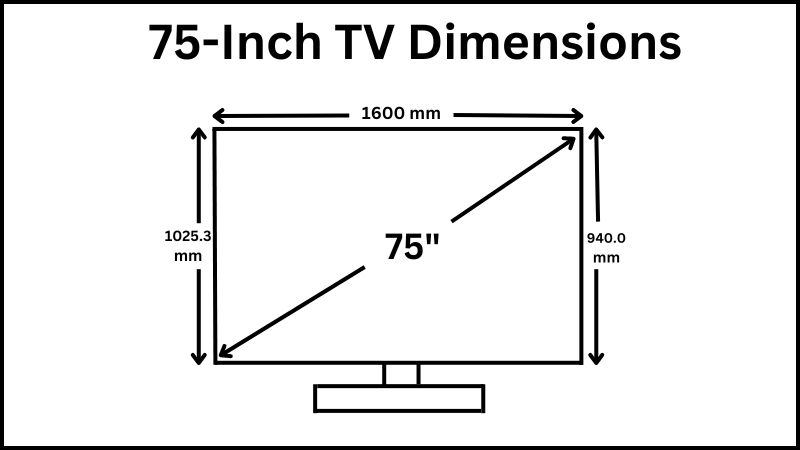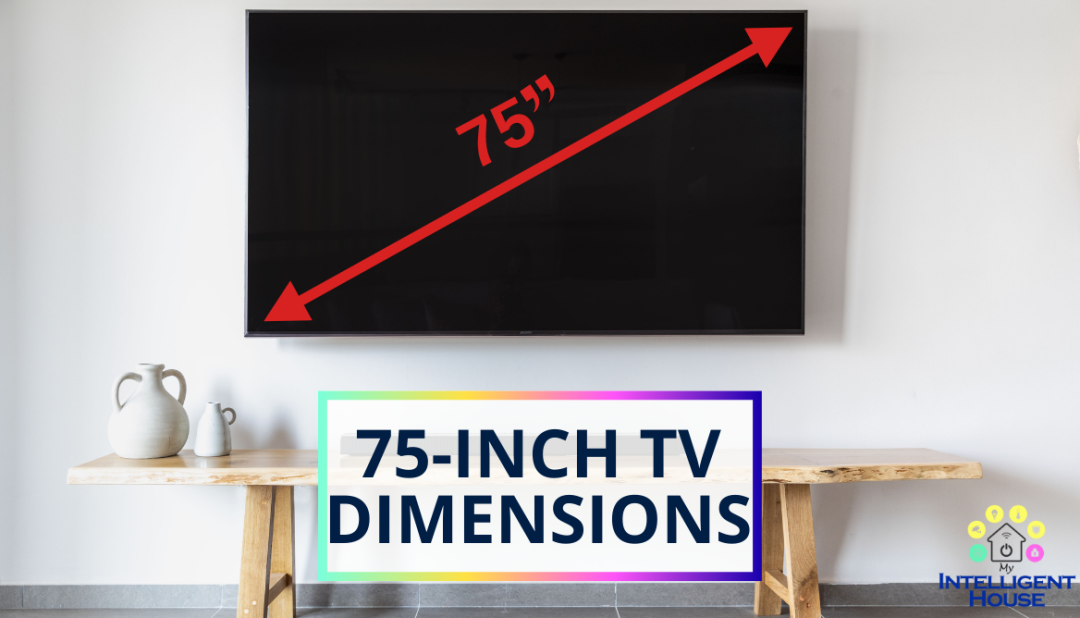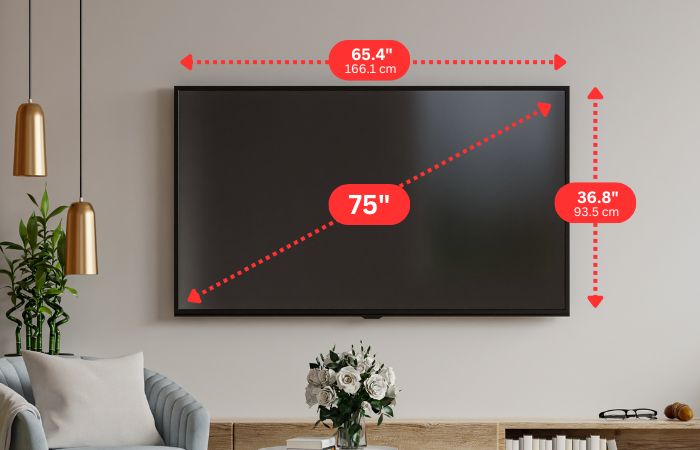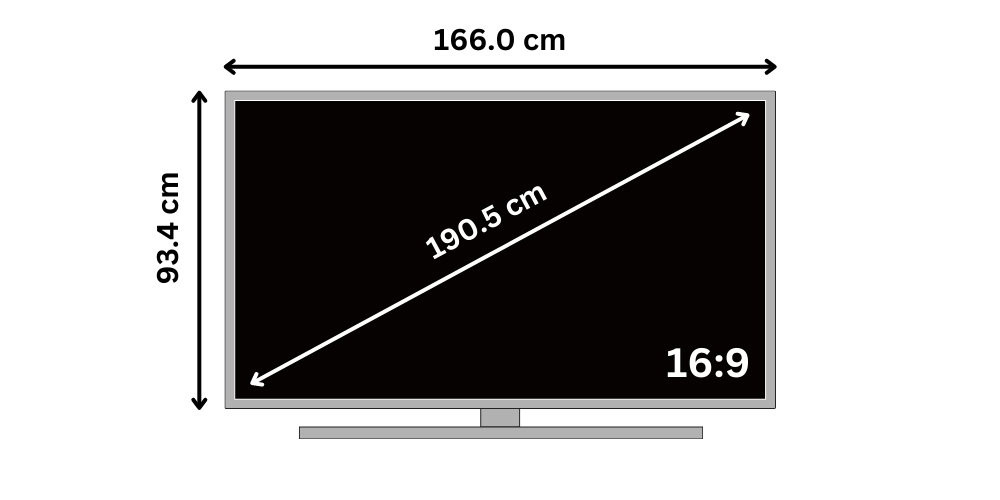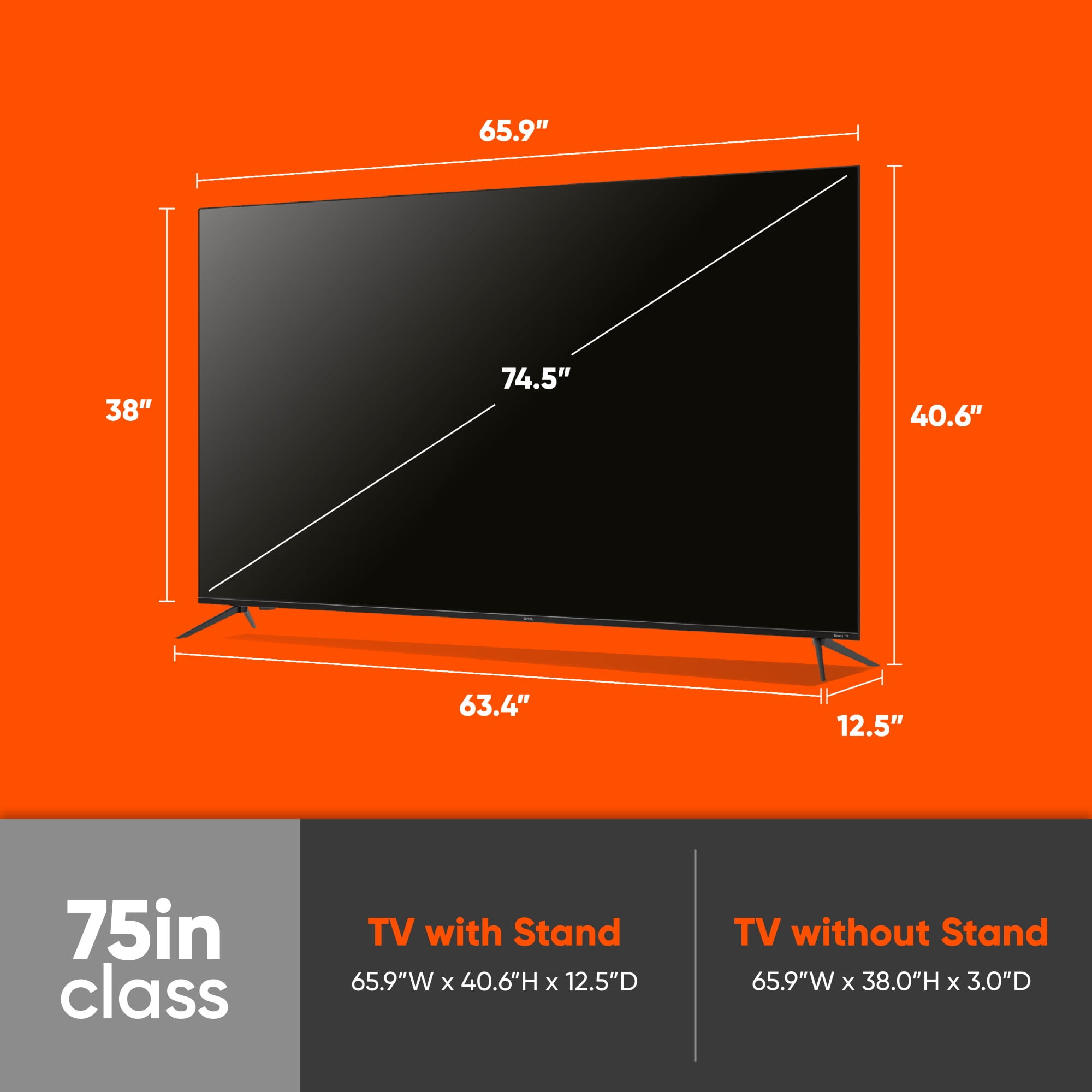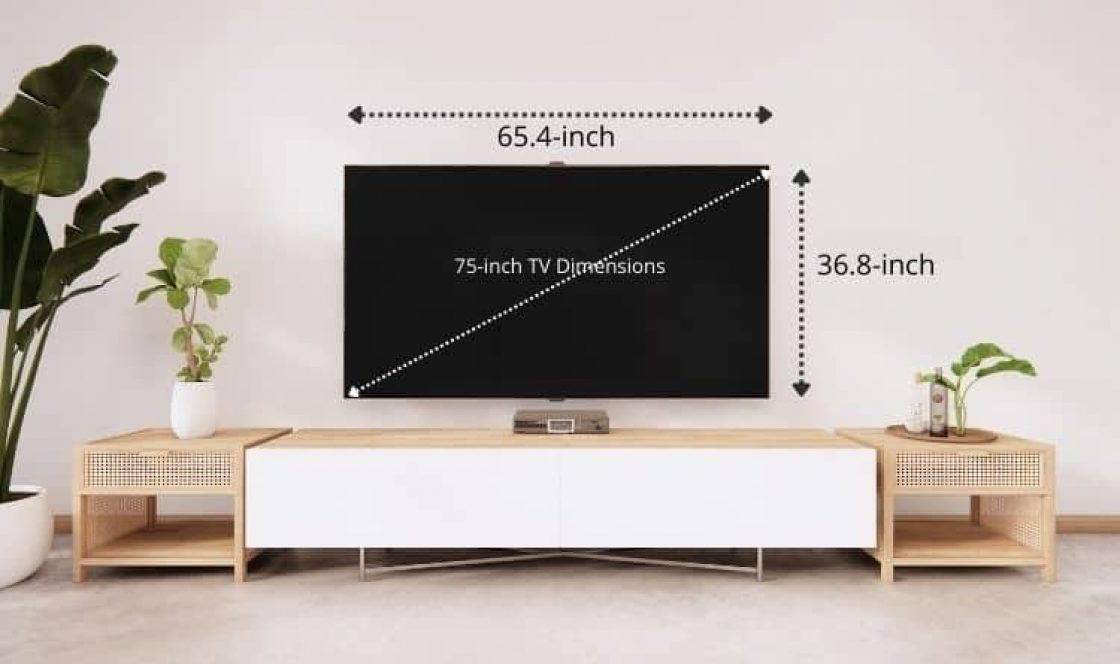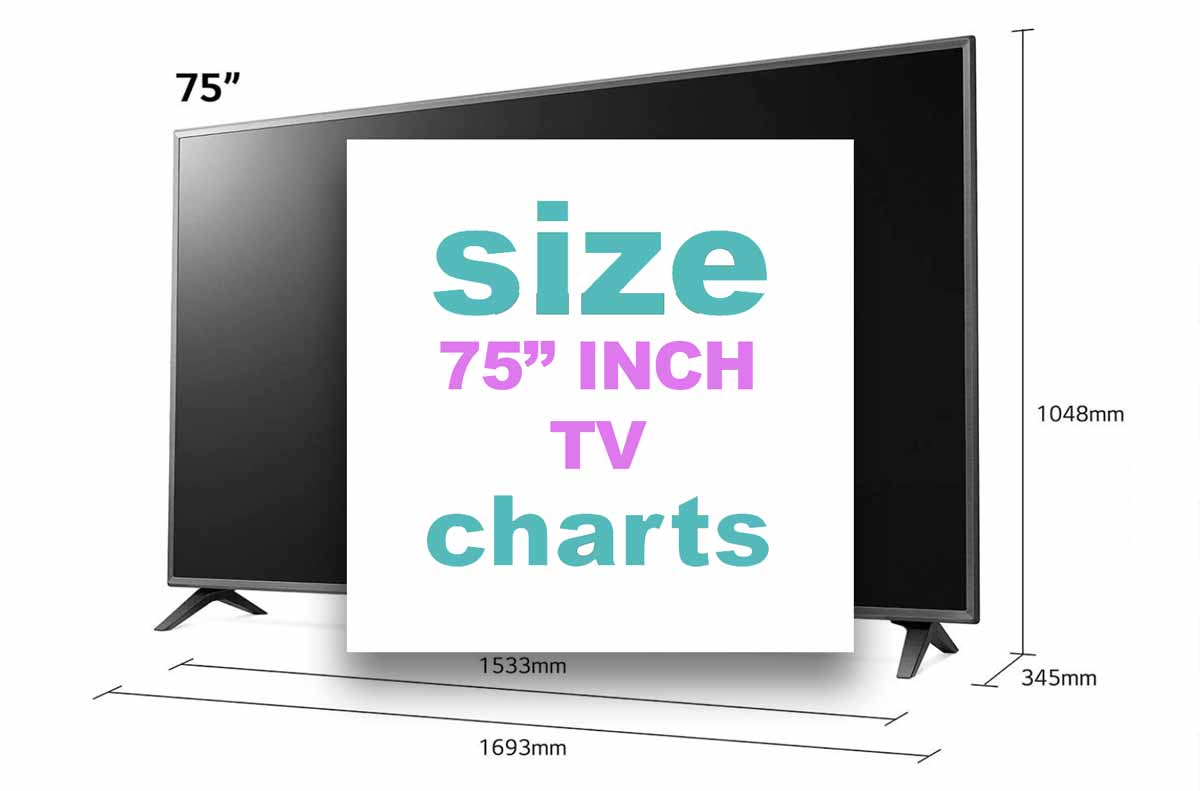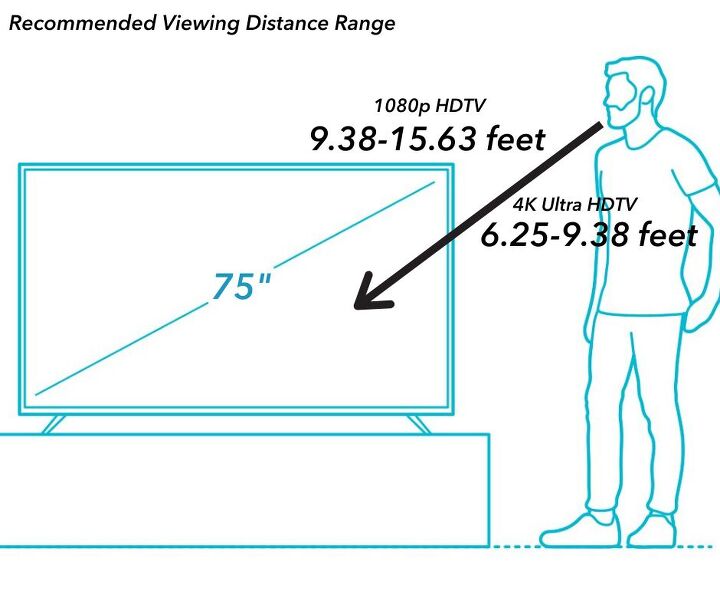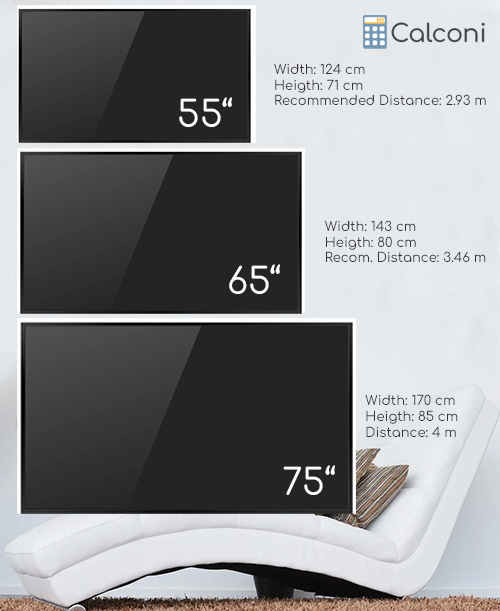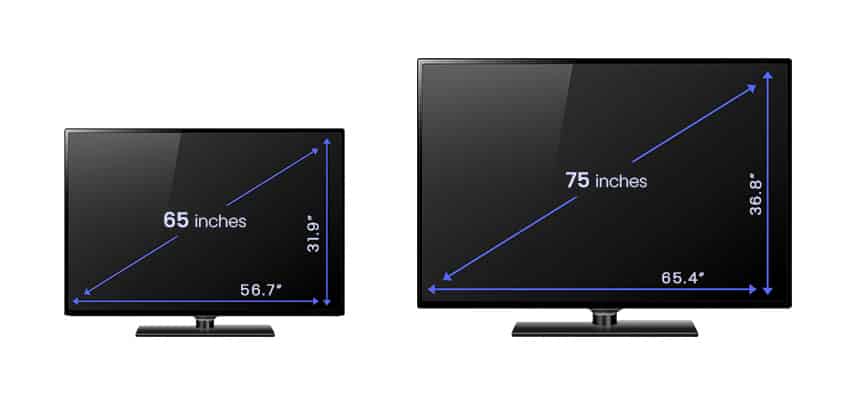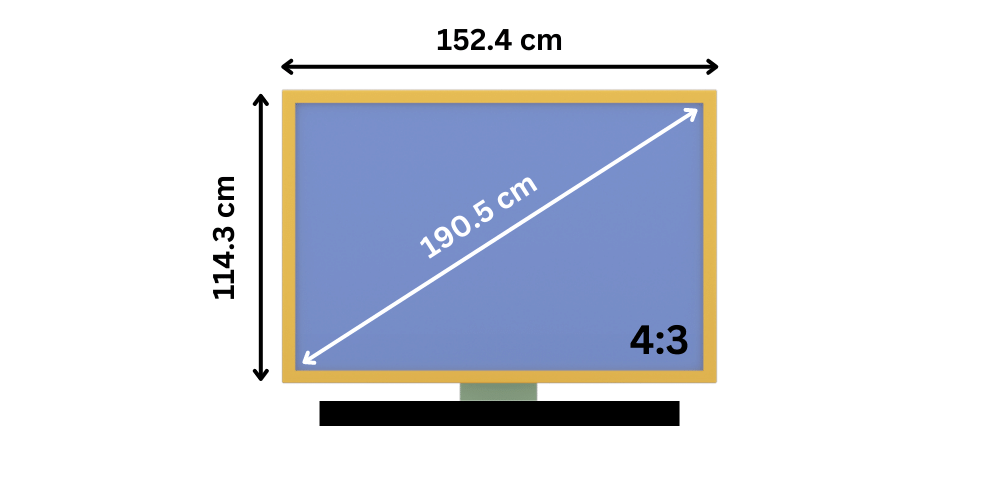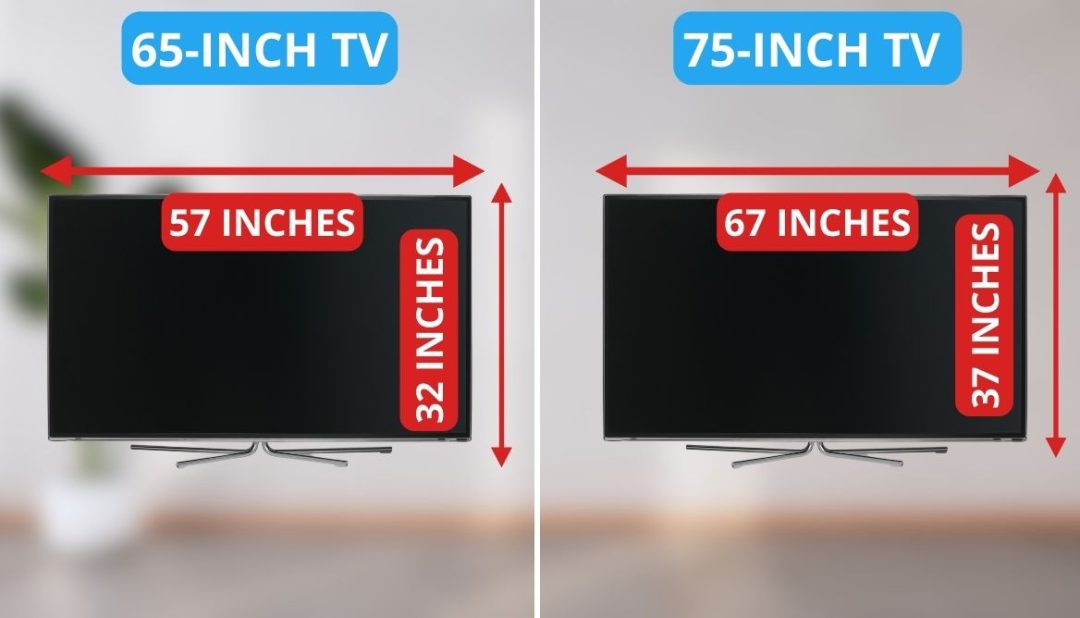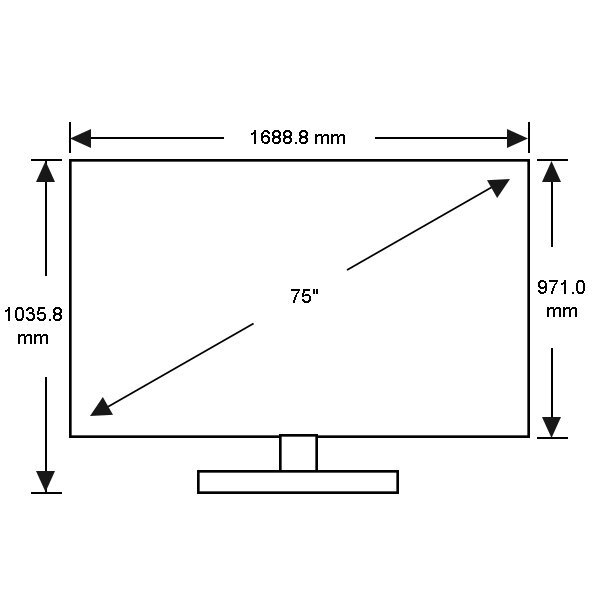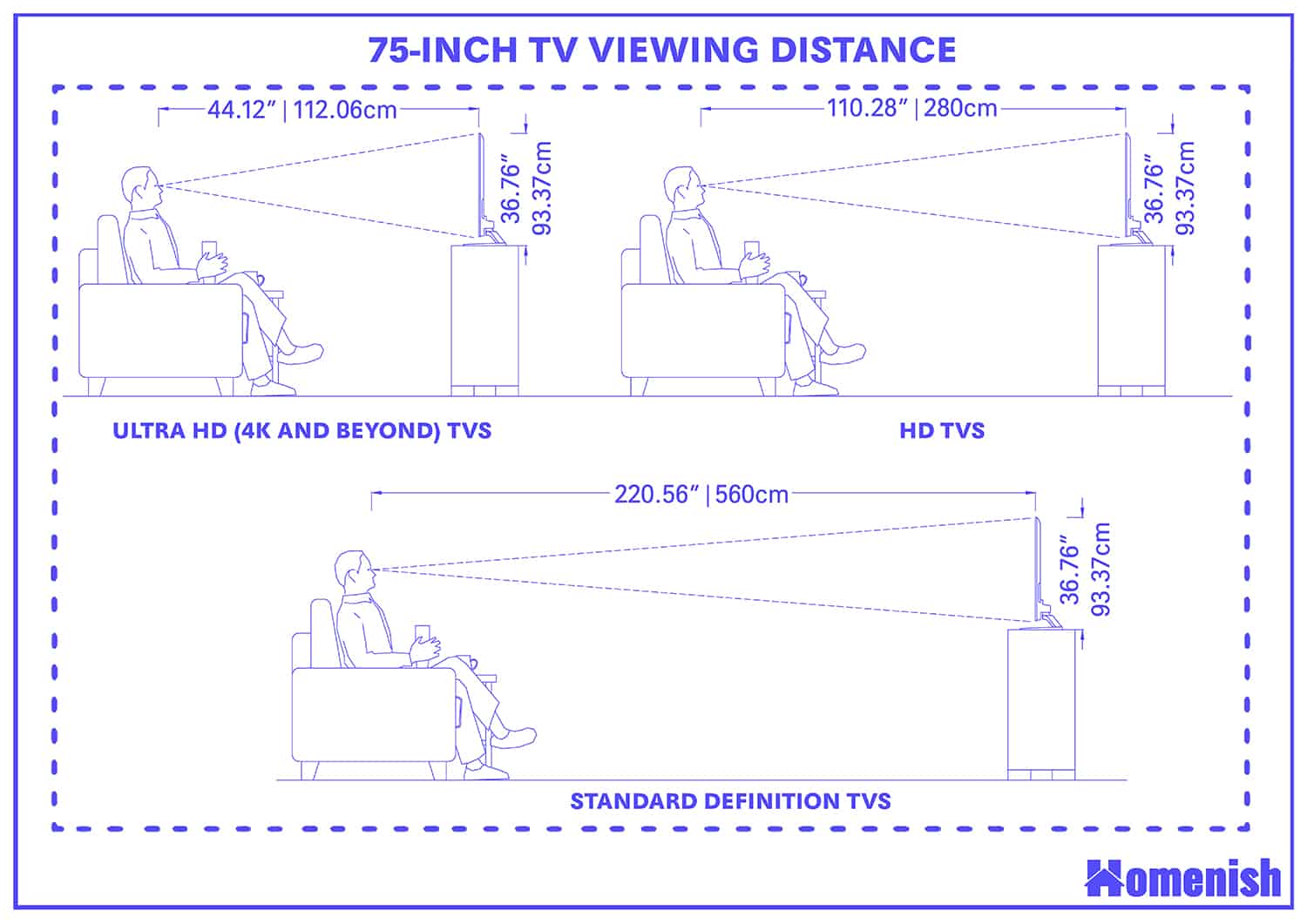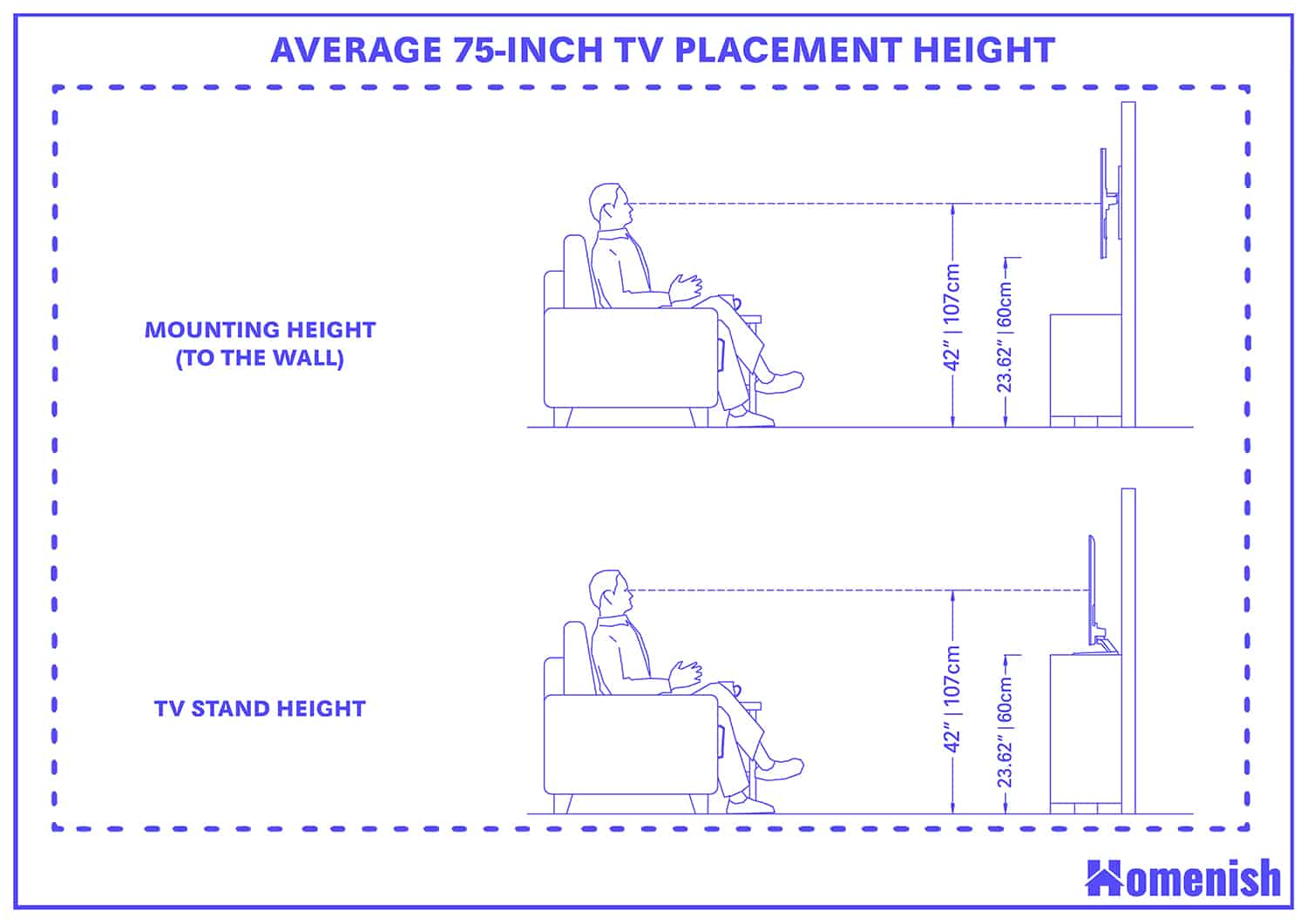What Are The Dimensions Of 75 Inch Tv
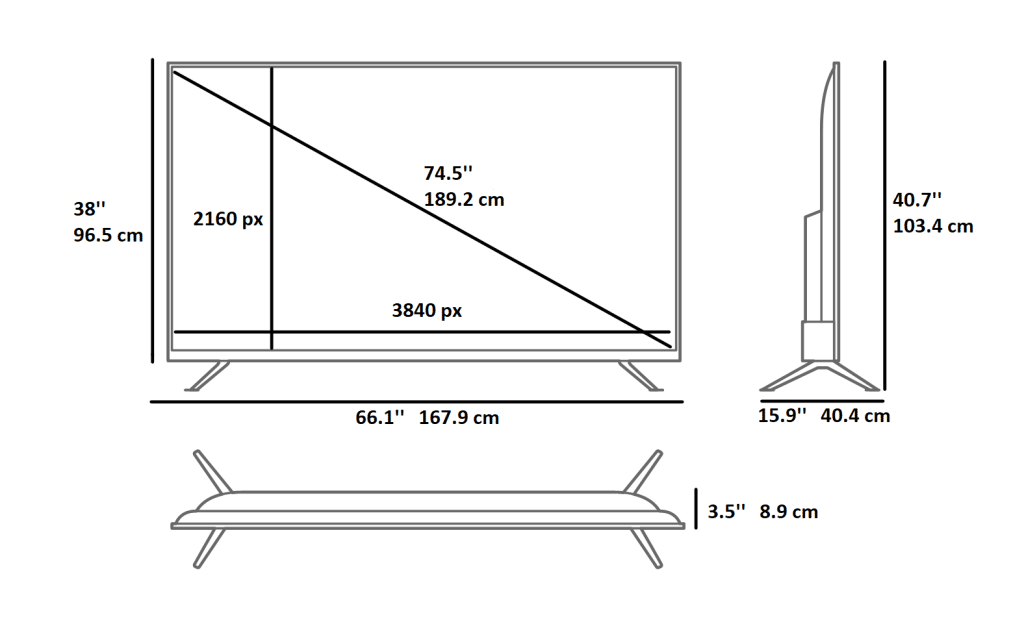
For consumers seeking a larger-than-life viewing experience, the 75-inch television has become increasingly popular. Understanding the physical dimensions of these screens is crucial for ensuring a seamless fit within a living space and optimizing the viewing experience. This article delves into the typical dimensions of a 75-inch television, addressing key considerations for prospective buyers.
At its core, the defining measurement of a television, including a 75-inch model, refers to the diagonal distance across the screen. However, this number alone doesn't paint the whole picture. The overall width, height, and depth of the TV, including the bezel and stand, play a significant role in determining whether it will properly fit in a room or on a specific piece of furniture.
Typical Dimensions of a 75-Inch TV
The screen size of a 75-inch television, measured diagonally, translates to approximately 65.4 inches in width and 36.8 inches in height. These figures represent the active viewing area of the screen itself, excluding the surrounding bezel.
Including the bezel, the overall width of a 75-inch TV typically ranges from 65 inches to 67 inches. The height, similarly, usually falls between 37 inches and 40 inches, depending on the design and manufacturer.
Depth and Weight Considerations
The depth of a 75-inch TV can vary significantly depending on the model and technology. OLED and QLED TVs tend to be slimmer, sometimes measuring only a couple of inches in depth without the stand. LED-backlit LCD TVs might be slightly thicker.
With the stand attached, the depth can increase to 12 inches or more. Consumers should check the manufacturer's specifications to determine the exact depth for their chosen model.
The weight of a 75-inch TV is another crucial factor, particularly if wall mounting is planned. These TVs can weigh anywhere from 50 to 80 pounds, making proper mounting hardware and professional installation essential.
Impact of Bezel Size
The bezel, the frame surrounding the screen, has a direct impact on the TV's overall dimensions. Some manufacturers are increasingly offering models with "bezel-less" or "borderless" designs. These designs minimize the frame, resulting in a slightly smaller overall footprint for the same screen size.
Consumers prioritizing a sleek, modern look may favor TVs with minimal bezels. This also helps to maximize the immersive viewing experience.
Why Dimensions Matter
Understanding the dimensions of a 75-inch TV is crucial for several reasons. It's critical for ensuring the TV fits within the intended space, whether it's on a TV stand, entertainment center, or wall mount. It helps prevent awkward overhangs or the inability to accommodate the TV at all.
Furthermore, dimensions influence the optimal viewing distance. A 75-inch TV typically requires a viewing distance of 9 to 12 feet for the best experience, minimizing eye strain and maximizing immersion.
Finally, knowing the weight and VESA mounting specifications is essential for safe and secure wall mounting. Choosing the wrong mounting hardware can lead to serious accidents and damage to the TV.
Human-Interest Angle: The Jones Family's Upgrade
The Jones family recently decided to upgrade their aging 55-inch TV to a 75-inch model. Excited about the prospect of a more immersive movie-watching experience, they initially overlooked the importance of precise measurements.
They were surprised to find that the 75-inch TV, even with its slim bezels, was significantly larger than their existing set. After careful measurements and some furniture rearrangement, they managed to create a viewing space that perfectly accommodated their new screen. The Jones family's experience highlights the importance of careful planning and accurate measurements before purchasing a large-screen television.
In conclusion, while the 75-inch designation provides a general idea of screen size, understanding the detailed dimensions, including width, height, depth, and weight, is essential for a successful purchase and installation. Checking the manufacturer's specifications and considering factors like bezel size, stand dimensions, and VESA mounting compatibility ensures a seamless and enjoyable viewing experience. Remember to measure twice, buy once.
